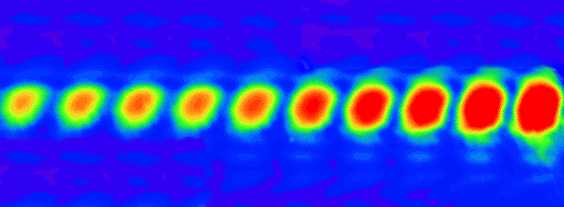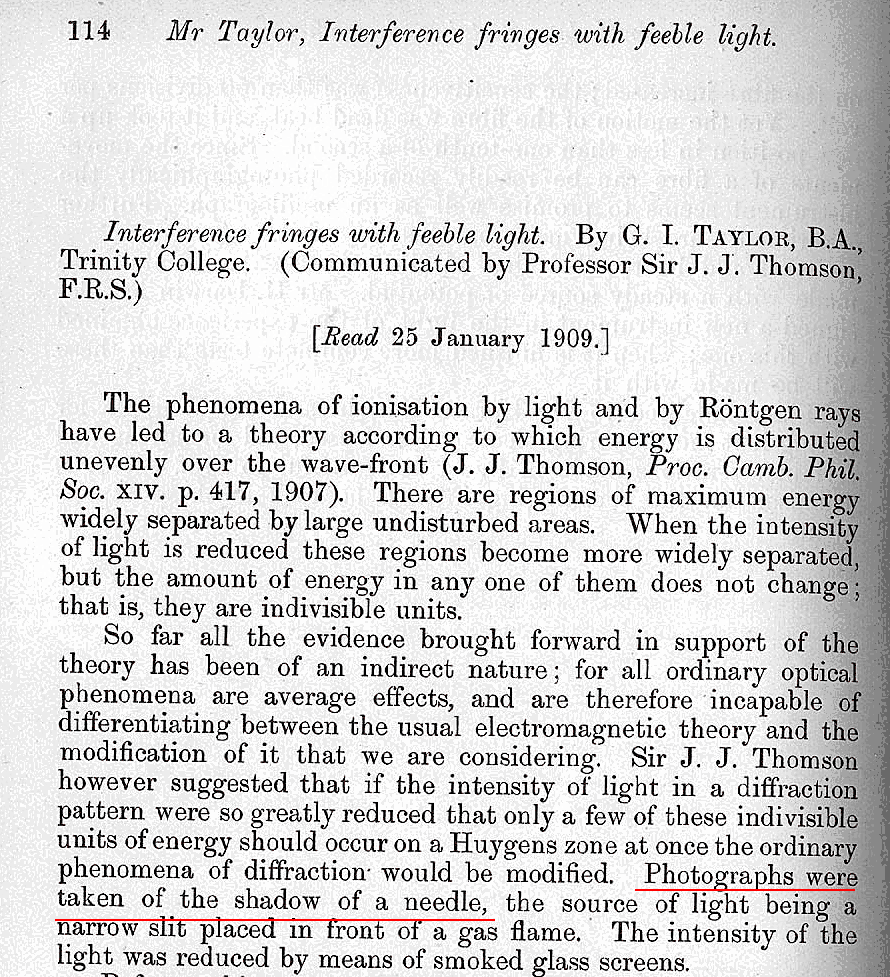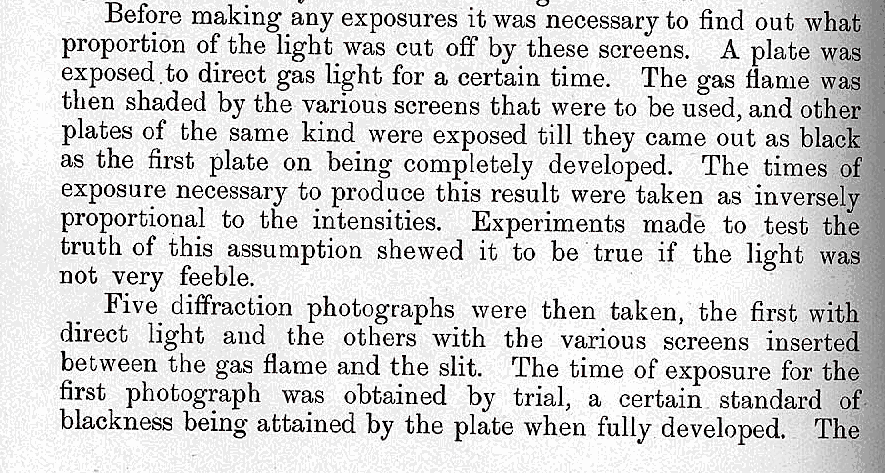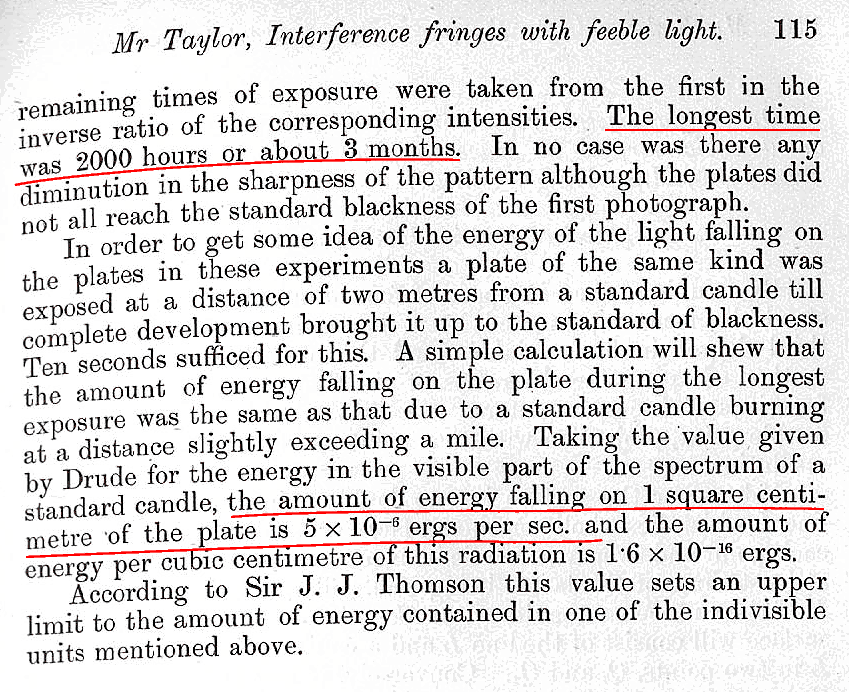
Image courtesy of R. Allan Baker and Saeid Rahimi of Sonoma State University.
 Copyright © Michael Richmond.
This work is licensed under a Creative Commons License.
Copyright © Michael Richmond.
This work is licensed under a Creative Commons License.
Let's make a list of the phenomena which suggest that light is a wave, and a second list which suggest that light is a particle.
Behaves like a wave Behaves like a quantum ----------------------------------------------------------
So, wave or particle? Or maybe both? Or maybe neither? Perhaps it behaves like a wave in some situations, and like a particle in others. But how does it know when to behave like a wave?
Interference is one of the phenomena which indicates that light acts like a wave. But doesn't it take more than a single wave to interfere and create an interference pattern?
Consider the experiment below, performed in 1908 and 1909: Taylor set up a simple apparatus which took photographs of the diffraction pattern around the shadow of a needle. Nothing fancy there.

Image courtesy of R. Allan Baker and Saeid Rahimi of Sonoma State University.
But he did it in a special way: using light of very, very low intensity. If light travels in quanta of a certain size, then a sufficiently feeble light source should send only one (or zero) photon at a time to any particular area. And if only one photon strikes a particular portion of a photographic plate at a time, how can a diffraction pattern form?



Can you figure out the interval between photons striking each grain
of silver halide on the photographic plate?
Below is a simulation of a portion of the photographic plate in Taylor's experiment. This portion lies just to one side of the needle's direct shadow. As each photon strikes the plate, it causes chemical reactions in silver halide molecules which are shown as little black dots (in real life, the dots don't become visible until the plate is developed).
Even at the very longest exposure times (3 months!), Taylor found that his photographs showed an interference pattern. So light was still acting like a wave, even though only one photon at a time might be flying past the needle ....
 Copyright © Michael Richmond.
This work is licensed under a Creative Commons License.
Copyright © Michael Richmond.
This work is licensed under a Creative Commons License.